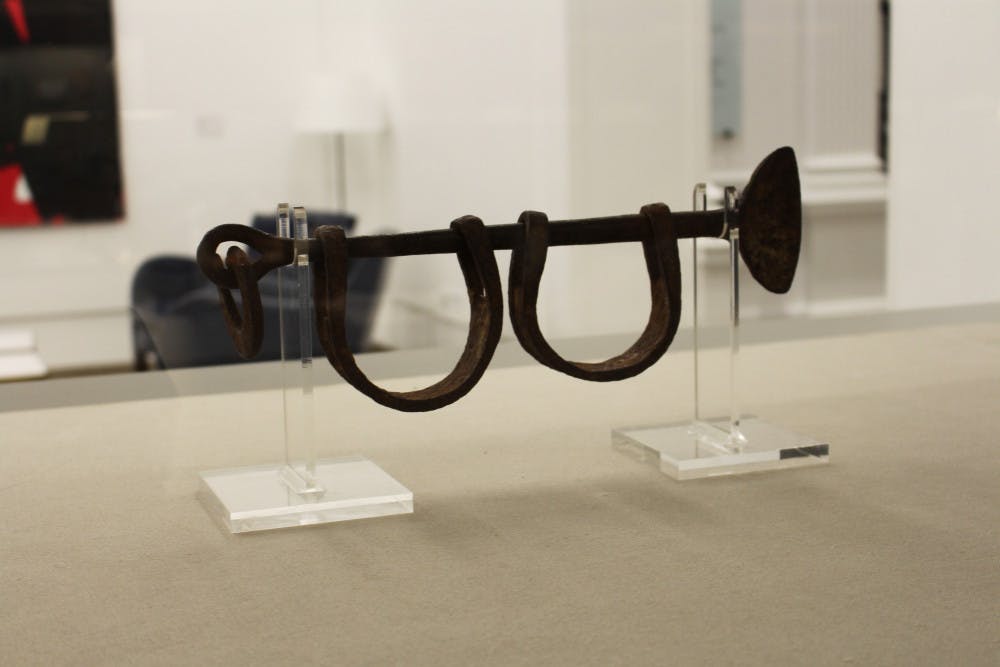The John Hay Library is displaying a pair of slave shackles, on loan from the International Slavery Museum, in a glass case at the entrance of the first-floor reading room.
The iron shackles are a type that were used on board slave ships during the brutal journey across the Atlantic Ocean from the west coast of Africa to the Americas, wrote Anna Ruchalska, collecting cultures project curator for the ISM, in an email to The Herald. The shackles were used to restrain and imprison Africans below decks in the ship’s hold, where cargo is traditionally stored.
“The shackles are a reminder of the history of the transatlantic slave trade and also a way to think about the ways in which we have to confront that history,” said Anthony Bogues, professor of Africana studies and director of the Center for the Study of Slavery and Justice. “To look at the shackles is not an easy thing, and they make people think very hard about the past and the present.”
The shackles came to Brown from a partnership between the CSSJ and the ISM in the Global Curatorial Project, a project looking at how exhibitions concerning the history and memory of slavery can be understood publicly, Bogues said. The shackles speak to a history that the center seeks to confront, especially in relation to Brown’s history and role in the transatlantic slave trade, as revealed in the 2006 report from the University’s Steering Committee on Slavery and Justice, he added.
The report found that some of the money used to found and fund the University came from the slave trade.
The shackles are displayed separately from the textual accounts and the antislavery collection box, a box that was used to collect money for the abolitionist cause. The shackles sit in a singular display case in the exhibit “Vestiges of the Transatlantic Slave Trade” because “they stand on their own and speak for themselves,” said Christopher Geissler, director of the Hay and Special Collections. They provide a material point of reference rather than just a textual one, he added.
Student groups from local elementary and high schools have visited the library to see the exhibit, said Holly Snyder, a curator for the University’s American historical collections for the Hay.
“No one was overly shocked, but most had questions, and they wanted to know more about how the shackles were used,” Snyder said. “Understanding how it was used puts it into perspective, and that’s why it’s such an important object.”
The antislavery collection box is displayed adjacent to the shackles to contrast the freedom offered by the abolitionist box and the confinement implied by the shackles, Bogues said. It is important to make the violence of the slave trade visible through the preservation of material objects, he added.
Bogues urged students to think about the past and the significance of the shackles and abolitionist box in today’s world. “The past is not just the past. It is not a distant shadow that we don’t pay attention to. The past is very much a part of what we are today,” he said.
The exhibit will be on display until March 13.





